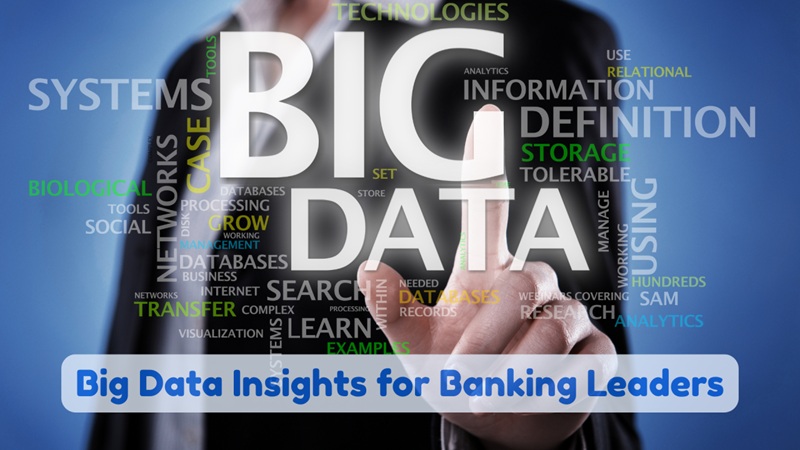Big Data in Banking: Insights, Use Cases & Future Trends
13th July 2025, Kathmandu
Discover how big data is revolutionizing the banking sector with real-time fraud detection, personalized customer experiences, and smarter decision-making.
Why Big Data Is a Game-Changer for Banks? Big Data in Banking
In today’s fast-paced and digitally evolving financial world, big data has shifted from a trend to a necessity. With rising customer expectations, an explosion in digital transactions, and increasing security threats, banks can no longer rely solely on traditional data processing. Instead, big data analytics in banking has emerged as a powerful tool to drive innovation, agility, and long-term profitability.
According to MarketsandMarkets, the global big data market is expected to grow from $138.9 billion in 2020 to $229.4 billion by 2025—a growth powered largely by mobile and digital banking.
The State of Big Data in Banking: Room for Growth
Despite its potential, only 16% of financial institutions believe they’ve fully leveraged big data, while over 50% are still developing foundational systems. Meanwhile, G2’s digital banking statistics reveal that 89% of users—and 97% of millennials—rely on mobile banking, generating vast amounts of untapped data daily.
Unfortunately, without the right infrastructure, most of this valuable data remains unused.
Why Big Data Is Necessary for Modern Banking?
Big data analytics enables banks to collect, process, and extract real-time insights from various sources such as:
Customer transaction records
Online behavior and interactions
Market trends
Regulatory compliance data
However, many banks face barriers such as:
Legacy systems are causing data silos
Delayed decision-making due to poor data integration
Inability to detect real-time fraud
Inefficiencies during high transaction volumes (e.g., salary disbursements)
Top 4 Use Cases of Big Data in Banking
1. Fraud Detection and Prevention
Big data enables real-time transaction monitoring using anomaly detection and machine learning algorithms.
U.S. Bank processes 1.5 billion+ transactions yearly, reducing false positives by 30% using big data (McKinsey).
2. Personalized Marketing and Customer Service
Behavioral analytics help banks understand customer journeys, enabling:
Personalized product recommendations
Lifecycle-based marketing campaigns
Accenture reports that 80% of customers are more likely to engage with brands offering personalized experiences.
3. Risk Assessment and Credit Scoring
Banks now use alternative data sources—mobile usage, utility payments, etc.—to assess creditworthiness.
Kenyan banks utilize telecom and utility data to extend microloans to the underbanked population, improving financial inclusion.
4. Regulatory Compliance and Reporting
Big data simplifies compliance by:
Automating AML checks and suspicious activity monitoring
Centralizing data for regulatory audits
HSBC uses AI and real-time analytics to enhance its AML system, cutting false positives by 20% and improving regulatory reporting speed.
Global Success Stories: How Big Data Drives Results
JPMorgan Chase (USA)
By leveraging big data for real-time fraud detection, JPMorgan reduces fraud losses by over 25%, analyzing billions of transactions annually.
ICICI Bank (India)
ICICI’s machine learning models boosted cross-selling by 35% and cut loan approval times from days to minutes.
BBVA (Spain)
BBVA unified its data systems to enhance client segmentation, resulting in a 12% increase in Net Promoter Score (NPS) and better digital engagement.
Challenges Banks Must Overcome
Despite its promise, implementing big data analytics in banking presents the following hurdles:
Siloed Data Systems: Disconnected legacy infrastructure blocks real-time insight.
Talent Shortage: Skilled professionals in data science and compliance are hard to find.
Compliance Risk: Regulatory frameworks like GDPR and PCI-DSS demand secure handling of customer data.
Slow Time-to-Insight: Non-scalable platforms delay decision-making, especially during transaction surges.
Enter DLytica: Simplifying Big Data with DataNature
To overcome these barriers, banks need a scalable and secure analytics foundation. That’s where DLytica’s DataNature steps in.
What is DataNature?
DataNature is a next-generation big data analytics platform built specifically for regulated, high-volume industries like banking.
Key Benefits for Banks
Low-Code Interface for faster solution development
Enterprise-Grade Security (ISO 27001:2022 certified)
Auto-Scaling Infrastructure for peak loads
Built-in Visualization & Dashboards
Seamless Integration with Azure, AWS, and on-prem systems
DataNature helps banks transform disjointed, slow-moving analytics into proactive decision-making and real-time insights.
The Bottom Line: Adapt Fast, Lead Smart
Big data is not the future—it’s the present. Banks that adopt big data analytics enjoy:
10–20% growth in customer acquisition
15–25% reduction in service operation costs
Up to 30% increase in fraud detection accuracy (McKinsey)
For Nepalese banks and others worldwide, the key challenge isn’t deciding whether to adopt big data, but how quickly they can embrace it to stay competitive.
Ready to Start Your Big Data Journey?
DLytica is here to guide you with a platform that’s intelligent, scalable, and built for finance. Let’s help you move from data-rich but insight-poor to insight-driven and customer-first.
For more: Big Data in Banking








